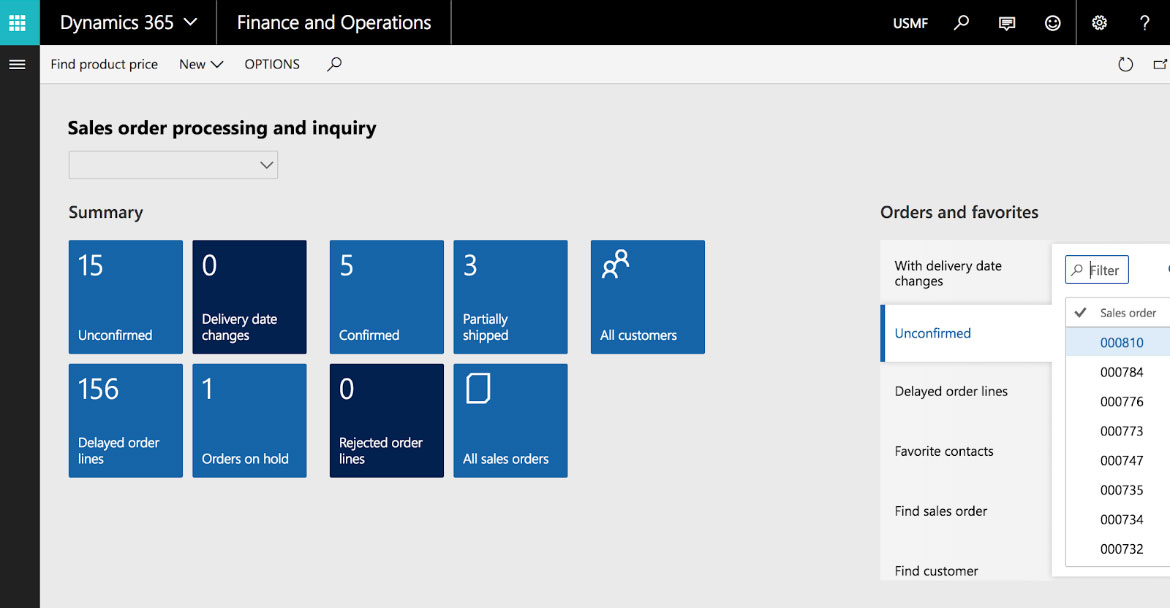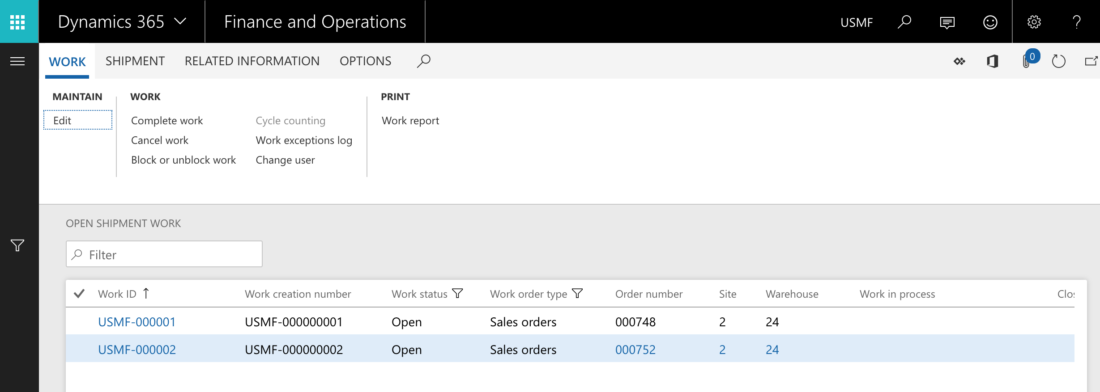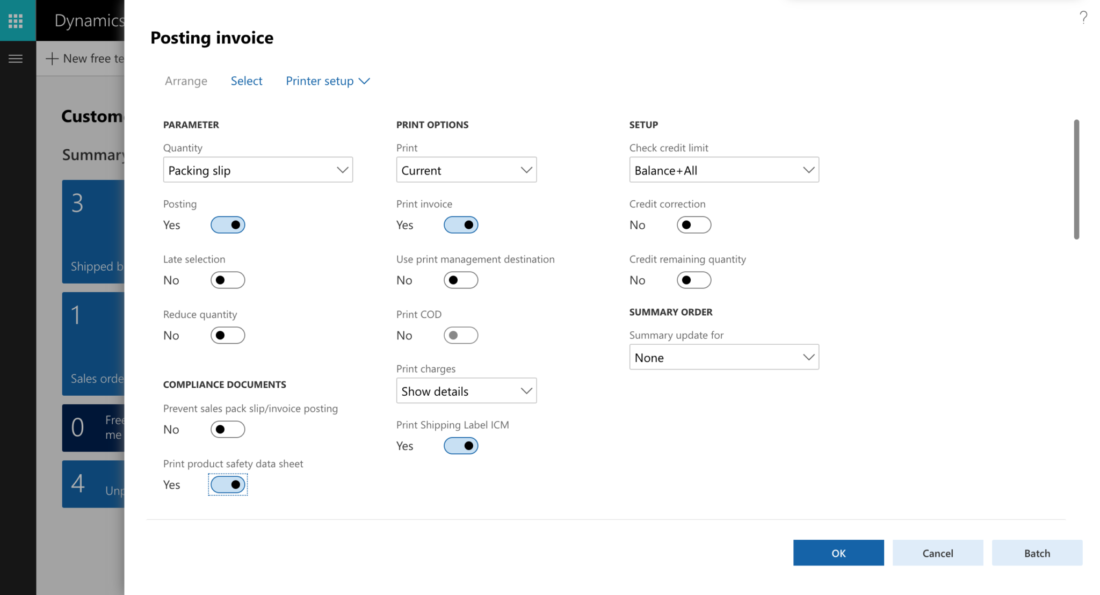At a Glance
Chemical distribution companies have several requirements when facing challenges in today’s business world. They include:
- Needing an overview of end-to-end supply chain processes including solutions to increase operational efficiencies
- Getting an overview of planning and inventory management for bulk chemicals and packaged chemicals
- Understanding best practice depictions of typical chemical distribution processes
By the Numbers
Chemical distribution companies today are focusing their efforts on optimizing supply chains, warehouse and floor operations. They function as a supply chain partner, anticipating customer needs and helping them stay ahead of their competition.
- The chemical distribution industry is on a massive growth curve. Grand View Research states the industry’s value was $247.1 billion in 2020.
- The expected compound annual growth rate from 2020 -2028 is 4.0 percent.
- There’s a growing need to set your processes straight and streamline your supply chain with sufficient controls in place to keep up with the pace of the market.
4 Key Processes
There are 4 key processes that matter to a chemical distribution company:
- 1.Order-to-Cash: The ability to take a customer order efficiently and deliver it by the customer’s deadline.
- 2.Procure-to-Pay: The ability to manage purchase orders and receiving departments efficiently, optimizing spending on procurement to avoid high capital inventory spending.
- 3.Inventory Management: Inventory Management: Maintaining optimal inventory levels without excessive capital spending.
- 4.Break Bulk Operations: Break Bulk Operations: Breaking down bulk shipments such as tankers and large shipments of individual products into smaller pack sizes.
User Story: Warehouse Chaos
Survival in a highly competitive world requires chemical distribution companies to efficiently organize and design their warehouses. Internal routes must be optimized to let manned and robotic pickers grab inventory for break bulking, repacking or outbound shipments. Inventory storage needs to be precisely planned, especially while handling hazardous chemicals.
Too familiar is the chemical customer with multiple warehouses. They store bulk and packaged chemicals stocked in rows, racks and bins spread across multiple aisles. Some of these chemicals require temperature controls. Many have hazardous condition restrictions.
It’s common for companies to focus on meeting the basics and storing things wherever they fit. No warehouses are organized, making it difficult to track where incoming product was stored and gathering items to fill customer orders.
Making matters worse are poor operational practices. For example a high volume order involved taking some contents from a 55 gallon bulk chemical drum. Operators move the drum to Staging, remove what order the order required and then leave the drum at staging. No effort is made to record the location or remaining quantity. At best, inventory numbers are manually written on a tag attached to the drum, not entered into the computer system.
This method creates many inefficiencies later in the production process. They include:
- 1. Inefficient use of space. The Staging area was already small. It was made worse by leaving drums and totes for break-bulk orders, causing Staging to grow continually.
- 2. Inefficient use of time. The system showed the drums were at their primary inventory location. Operators unable to find items there had to manually check each tag. Some operators eventually knew to look for inventory in the primary or staging locations. Other workers wasted time looking for the items.
- 3. No inventory tracking method.
- 4. Inaccurate inventory counts. Inventories were constantly adjusted for missing or untraceable inventory. Lack of accurate counts meant ordering more supplies to fulfill customer demands.
- 5. Over ordering meant not having enough space to store the extra bulk material.
The chaos caused by not returning bulk items to their designated location can make conducting a physical count a Herculean task. With missing inventory placed at unplanned staging locations, it added to the warehouse imbalances.
An Ideal Journey
Organizing any operation-chemical manufacturing or distribution—starts with analyzing its operations, growth initiatives and business goals for the next five years.
Ways to make warehouses more efficient include:
- Review existing warehouse storage and design in terms of locations and inventory groupings.
- Using federal, state and local safety guidelines based on chemical properties, create procedures stating where chemicals must be stored.
- Number locations by aisle, row, rack and bins.
- Place the fasting moving items close to the shipping area.
- When receiving bulk containers, label them with a scannable barcode.
- Label the put away locations and staging locations so checkers can quickly and easily count quantities in a specific location.
- Provide workers with mobile devices that let them scan barcodes providing real time work details and order status updates.
Processes and Procedures in the Chemical Industry
Chemical manufacturing and distribution companies have many similarities in terms of receiving, inventory, planning, shipping and warehouse management.
The basic processes within the chemical distribution industry are centered more around warehouse management, inventory, planning, repacking, light manufacturing, shipping and receiving. Chemical manufacturing adds route operations, resources and work in progress (WIP) testing.
Inventory management processes in a chemical distribution company start with Purchasing and Receiving.
Purchased products are bulk or packaged chemicals, packaging items, labels and other supplies. These products normally come from an approved primary vendor or supplier.
Reporting and analytics shows two statistics that determine the effectiveness of the primary supplier:
- 1. The buyer’s decision to switch to an alternate vendor for a specific purchase.
- 2. The number of times this change occurs.
Vendor ratings showing the percentage of purchases delivered on time and in full is also important to buyers.
Figure: 1High-level Flow of Purchase Order-to-receive Process

The next major process is inventory and warehouse management.
The most efficient warehouses are organized by aisle, row, rack, bin, lot or batch. They have pallet ID tags and box IDs. Materials managers seeking better organization find that using a license plate number for rows, racks, bins and pallets works best. Using scannable barcodes lets users with mobile devices easily retrieve inventory.
Using this method reduces lost inventory, incorrect counts and locations. It also makes tracking individual products faster and easier such as when repacking items.
Labeling all warehouse locations is also critical when streamlining operations. Two common methods are Serpentine and Standard. Most companies follow a four location naming standard with aisle, rack, row and bin.
Figure: 2Layout of a Typical Warehouse in a Chemical Distribution Company

The third main process used by chemical distribution companies is capacity planning or master planning.
These companies should plan to break bulk and repack, changing labels at each stage. Master plans help track human resources, label printers, packaging machines and other devices.
Typical operations such as repackaging or breaking bulk require those stations and their operators. These functions cannot occur when either is unavailable.
Distribution companies seeing fast moving or express items require planning that is more agile. Agility requires operating on a net change mode instead of completely recreating set-ups every hour. Having that flexibility helps planners make key decisions and set priorities that optimize the work effort.
Figure: 3High-level view of Master Plan in Microsoft Dynamics 365

The fourth major process is production and packaging.
Production in chemical distribution companies uses light manufacturing operations such as repacking. A bulk container is opened and quantities required to fill an order are removed.
Typical work orders include operations such as filling, packing, labor, quality and Labeling. The yield provides the quantities and costs to produce each container.
Labeling is the fifth major process.
Labeling is an additional operation on the shop-floor. Including an integrated label management solution included in normal workflows ensures merchandise is properly tracked.
Figure: 4High-level Repack Process in Chemical Distribution

The last two steps are order management followed by billing.
Once inventory is available, warehouse pickers should select the fastest route that lets them gather all items to fill that order. Items are then packaged, labeled and wrapped. Typically, they include certificates of analysis, safety data sheets, a packing slip and a bill of lading. Smaller orders often include a commercial shipping service tracking number.
As soon as everything is packed and shipped, the final step is sending the customer an accurate bill.
Figure: 5High-level Customer Sales Order to Shipment in Chemical Distribution

Get a demonstration of Microsoft Dynamics 365 for your chemical distribution needs.
What a Distribution Company Looks Like in Microsoft Dynamics 365
Below is a quick view of what a chemical distribution company would look like in Microsoft Dynamics 365 assuming all required raw materials are available.
01.Products
This information is maintained within the Product Information Management (PIM) module. For a chemical distribution company, it is the heart of supply chain and manufacturing.
At a high level, Product falls into these categories:
| Item Group | Type | Defination |
|---|---|---|
| Item – RM | Raw Material | Ingredient Purchased |
| Item – INT | Intermediate | Produced as Part of the Formulation |
| SKU | Finished Product | Containerized Finished Product through a Formula |
| Label | Package – Raw Material | Labelled Raw Material |
| KIT | Finished Product | Packaged into 1 case with same SKUS |
| BOX | Package – Raw Material | Package Purchased |
| Container (Tote, Drum, Etc.) | Package – Raw Material | Package Purchased |
| Package (Cases, Kits, Etc.) | Package – Raw Material | Package Purchased |
| Services | Services | |
| Supplies | Expensed Packaging Material, Lab Supplies, Office Supplies, Etc. |
In addition, companies should define products requiring tracking by batch, location and license plate. These items may also require coverage settings, lead times and other attributes such as chemical properties and label elements such as hazard statements, pictograms and hazard symbols.
02.On-Hand Inventory
Having a detailed view of inventory by batch, serial number, site, warehouse, location and license plate number for each product provides an inventory snapshot. The data applies to multiple roles such as planners, buyers, customer service representatives and materials managers.
D365 can also produce an inventory value report. It shows inventory quantity and total value plus the physical and financial cost by unit. Having a view into on-hand inventory value for both inventory and WIP can then be reconciled back to General Ledger.
In Dynamics 365, there are many different ways of slicing and dicing inventory. One screen is an on-hand list view displaying all available inventory based on dimensions. Selecting the dimension displays the site, warehouse, location, batch and serial number.


03.Sales Orders
D365 is versatile in terms of orders for chemical products, kits or cases. In Microsoft D365, customers can have products shipped to them or directly to their customer.
This process starts when customer service creates a sales order with the customer’s PO number. They add the products being shipped to the customer. The order can include specific customer instructions and notes. Notes and attachments can be set for printing on specific documents such as the packing slip or bill of lading.
For distribution, Microsoft Dynamics provides a Distributed Order Management (DOM) indicator. It provides a complete picture of inventory across the warehouse and ensures the order processes correctly.



04.Master Planning
Depending on how the packaged items are set up for planning (e.g., min/max, requirement or period) with lead times and calendar setup, companies can run a master plan in a regeneration mode. This mode displays all supply, demand, planned supply and forecasted demand or net changes since the last full master resource planning run.
Typically, companies run master planning for all items or items under a certain coverage group such as fast moving items.

05.Production of Kits and Cases
Microsoft Dynamics 365 has extensive functionality supporting all chemical distribution company production operations. The operations can be streamlined for simplicity or conform to current methods.
For example, setting a production order in D365 can include finished goods produced, work planned, tracking operations, routes, resource cost and job scheduling.
Different views are set based on security roles and privileges. These allow different sets of users to view the production order, picklists, route cards or job cards.



Companies can also use Gantt charts to visually see planning and job scheduling. D365 has a powerful visual planning and scheduling tool that comes handy when scheduling tasks for all sales orders planned during a day, week or a month.

Bill Of Materials(BOM) journals are used in the production process to add finished goods into inventory and to reduce the inventory components within the formula or BOM.
These journals help reduce the process time instead of using a full production order.
A BOM journal cannot perform functions like tracking jobs and operations. It also is not part of visual planning.

Note: Xcelpros earlier blog post on “Operational Challenges in a Chemical Company: Key Solutions” explains production and operations in more detail.
06.Shipments
International shipments add export documentation not required for domestic deliveries. Both shipment types use a common document set generated by D365.
Using D365’s advanced warehouse management functions, outbound work and a shipment wave is created to pick products and put-aways for packaging.
D365 enhanced with the power of Integrated Chemical Management (iCM) prints a documentation package including:
- Warehouse Work: Displays sales order number, work number, product batch or lot number, license plate information and put-away location in barcode formats. Work is processed using a barcode device.
- Packing Slip: Displays the sales order number, customer PO number, delivery method, ship date, product to be delivered, quantity delivered, unit of measure, batch number or lot number delivered, ship to address, ship from address, back-order quantity and other related information.
- Bill of Lading: Displays ship to address, sales order number, hazard information, pallet information, number of boxes, master bill of lading number and related materials.
- Certificate of Analysis (C of A): Displays product, company logos for private label customers; test specifications; test results including visual, fraction, integer tests; approver information; expiration dates or best before dates; and test dates.
- Safety Data Sheets (SDS): Displays product label information, pictograms, hazard statements, warning statements, transportation and U.S. Department of Transportation required information by country and language, CAS number information, etc.
- Shipping Labels: Displays company logo, ship to address and product information.


07.Invoicing
After shipments are done, Microsoft Dynamics 365 gives companies the ability to create invoices in a batch mode or mass select shipments for invoicing. The system also lets them print or email a specific customer email address.



Key Takeaways
Chemical distribution company executives should compare what their firm looks like now and how it might look after migrating to Dynamics 365.
D365 allows companies to streamline processes with a robust, simple, easy to understand and powerful system. Its ability to integrate with other Microsoft applications allows your company to fully integrate and enhance efficiencies.
Power tools such as master planning and production Gantt charts provide the ability to plan and schedule your production operations.
Microsoft Dynamics 365 helps boost your business efficiencies through the “one Microsoft ecosystem” by working seamlessly with products such as Office 365.
Microsoft Dynamics 365 can address most chemical distribution company requirements without modification.

What does your company look like in Microsoft Dynamics 365? Talk to us to take a test drive.





